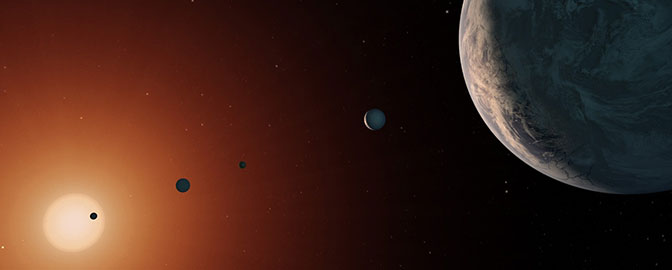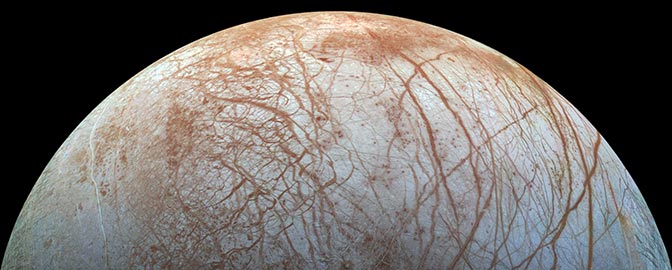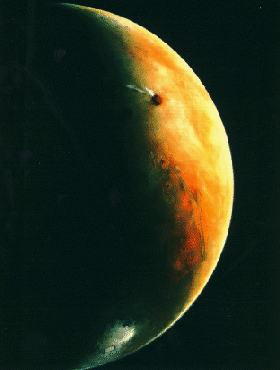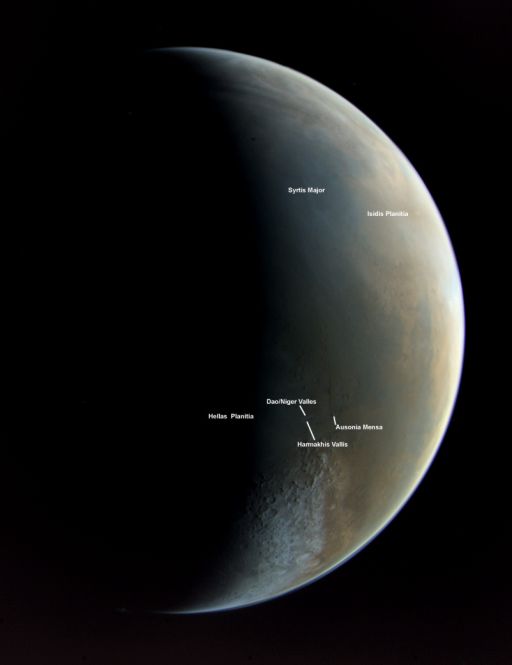Emily Lakdawalla • Aug 27, 2008
Pictures from the past: Viking 2 approaches Mars
On Monday I pointed to the awesome new website for the VMC instrument on Mars Express and mentioned that the camera can get views of Mars in a crescent phase. I thought it might be the first spacecraft to do so, but a couple of readers wrote in to tell me that they remembered crescent views of Mars from Viking 2. A Google search quickly yielded an image on Astronomy Picture of the Day from 1999, showing a tiny, garishly colored view of a crescent Mars.
Raw Viking images contain a lot of speckly noise, random missing lines, and reseau markings, black dots painted onto the camera optics to help the imaging team remove distortion from the images. Thankfully, there is a piece of software that you can download from Peter Masek's website that copes with the first two of these problems. (His site also contains a lot of background information on how the Viking cameras worked.) I used his software to despeckle and convert the original files to a format that Photoshop could read. Then I took the images into Photoshop, combined red, green, and violet filter images into a color composite, and used the Photoshop clone stamp tool to remove the reseau markings by painting over them with bits of color from elsewhere in the image. Voila, a spectacular set of Viking 2 images of Mars' looming crescent.
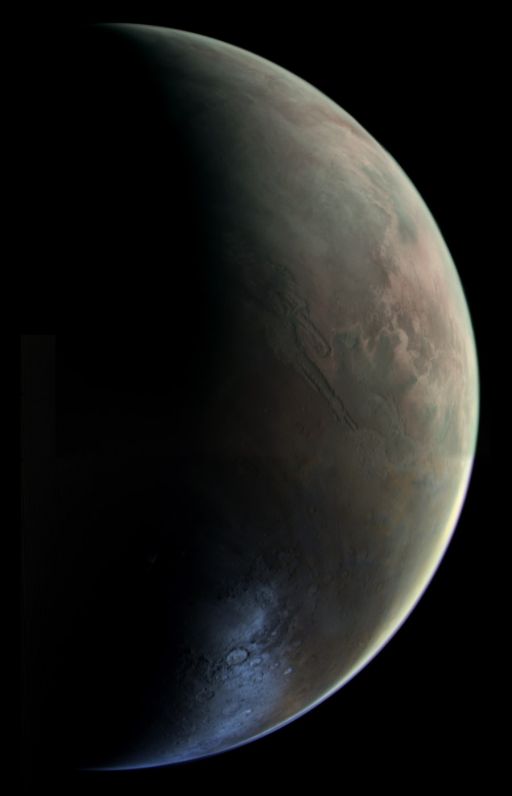
NASA / JPL / color composite by Emily Lakdawalla
Viking Orbiter approaches Mars
This is the final image of Mars captured by Viking Orbiter 2 as it approached for its orbit insertion on August 6, 1976. It is a two-image mosaic. Valles Marineris is clearly visible at the center of the disk, crossing the terminator. In the south, frost extends up into the Argyre basin; on its edge, with a dark outline, is the crater Galle, famous for the eroded remnants of a central ring that makes it look like a happy face.The Time is Now.
As a Planetary Defender, you’re part of our mission to decrease the risk of Earth being hit by an asteroid or comet.
Donate Today

 Explore Worlds
Explore Worlds Find Life
Find Life Defend Earth
Defend Earth